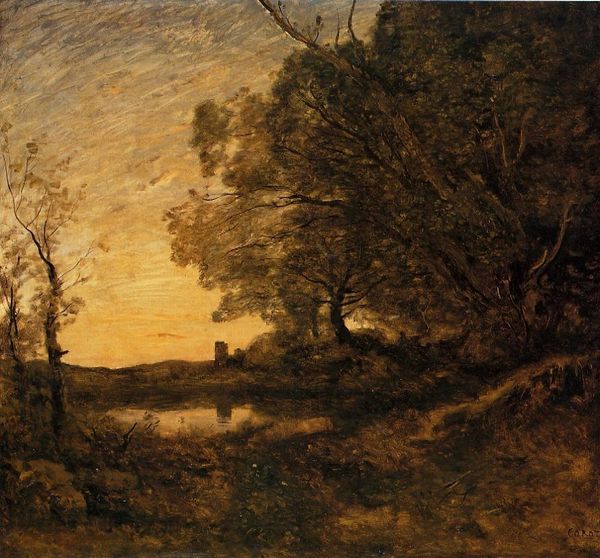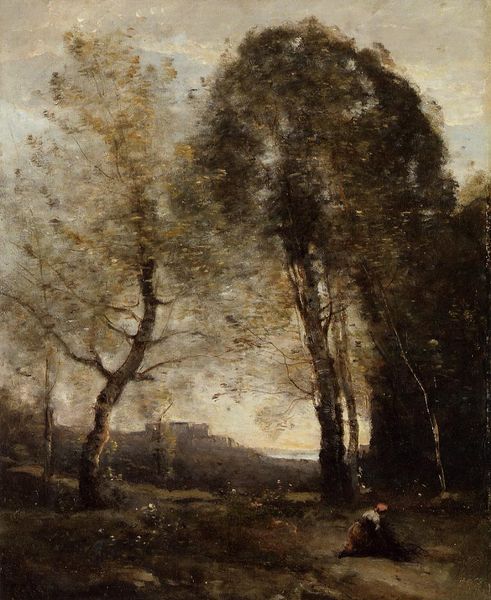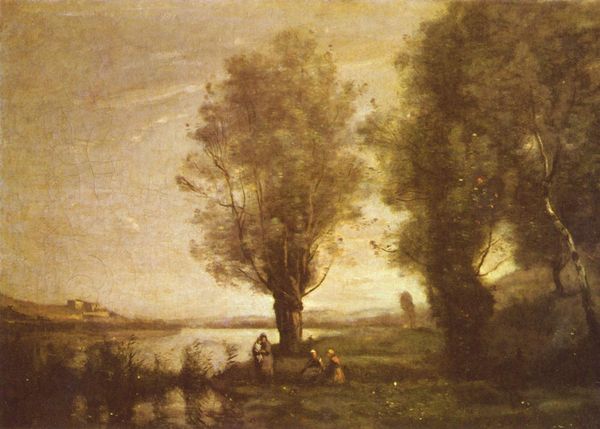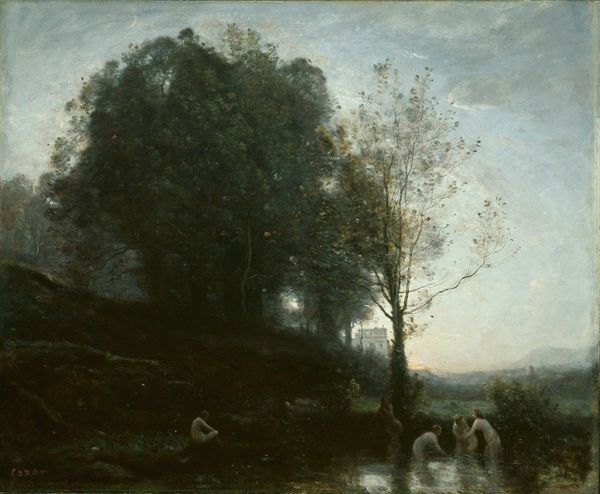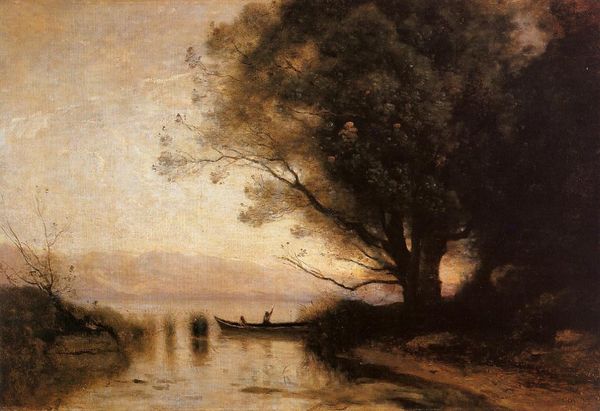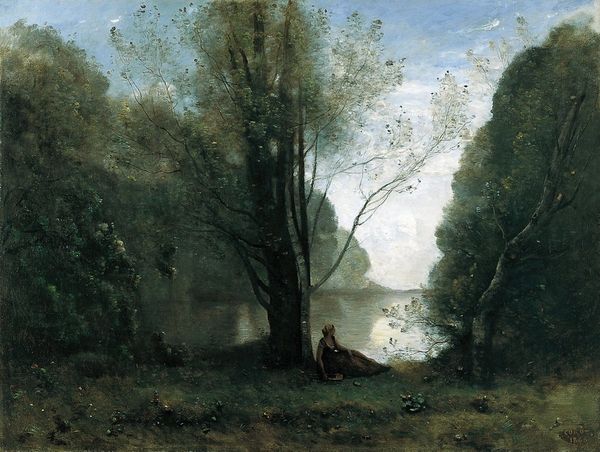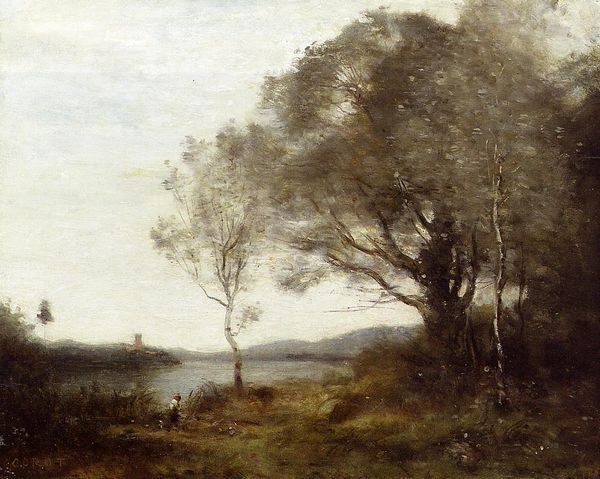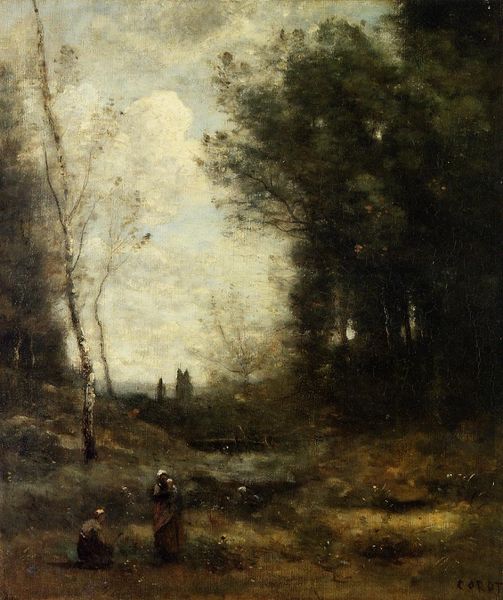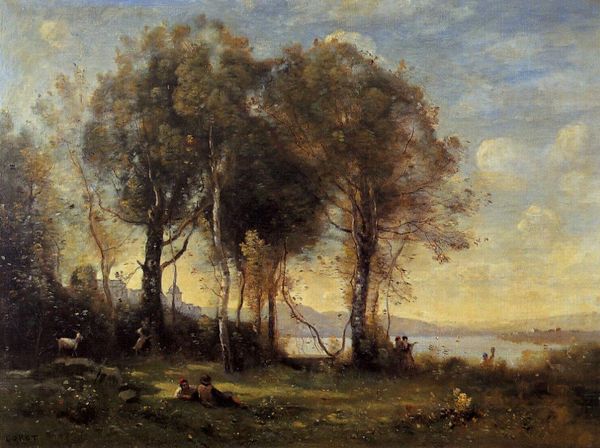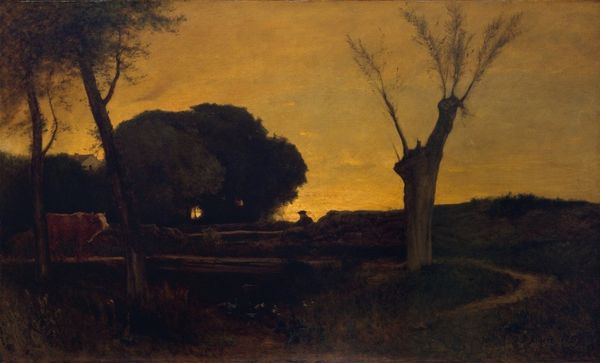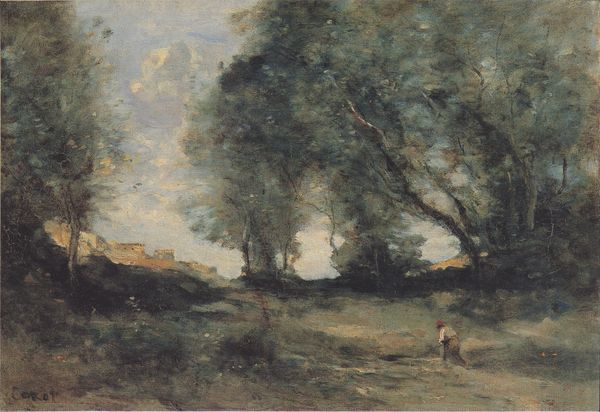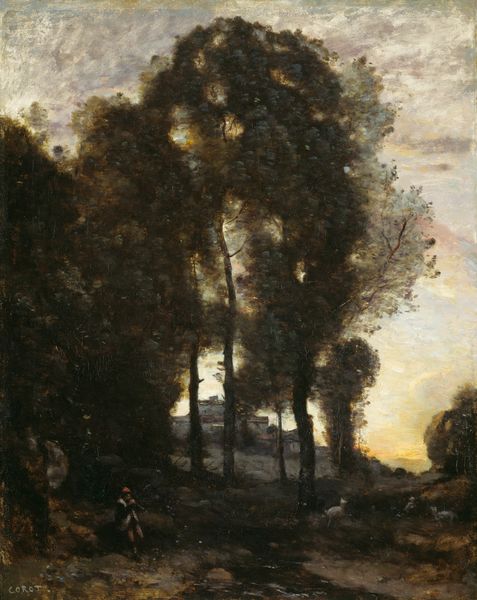
Dimensions: 71 x 90 cm
Copyright: Public domain
Editor: This is “The Evening Star,” painted by Camille Corot in 1864. It’s an oil painting, and it strikes me as incredibly peaceful, almost melancholic, with that solitary figure gazing towards the star. What do you see in this piece? Curator: I see a profound connection to classical pastoral themes, but filtered through a 19th-century sensibility. Notice the figure, seemingly beckoning the evening star. Consider, too, the visual weight of the darkening landscape pressing on the shrinking space. It calls to mind archetypes – the shepherd, the wanderer, perhaps even a personification of Evening itself – figures deeply embedded in our cultural memory. Corot’s painting exists in dialogue with centuries of artistic tradition, and a shared vocabulary that binds cultures together through images and emotion. What do you think that shared feeling may be? Editor: I think there is a sense of wonder, and maybe a little loneliness. Is it common to portray stars in Romanticism, especially evoking solitude? Curator: Absolutely. Stars have always served as potent symbols: of guidance, destiny, the divine, as in mythology when gods and mortals were intertwined. Think of how often we reach for metaphors from the celestial world to understand our place in the cosmos and address inner states. The lone figure amidst the vast landscape amplifies those ideas. Even the colors themselves, muted and blended, suggest a dreamlike state, a world existing somewhere between reality and imagination, like a place between life and death. Editor: That's a completely different take than my first impression! Thank you, I never considered looking at paintings from that historical, symbolical lens. Curator: Art helps us see connections. I leave with an awareness of our shared symbols from past to future.
Comments
No comments
Be the first to comment and join the conversation on the ultimate creative platform.
